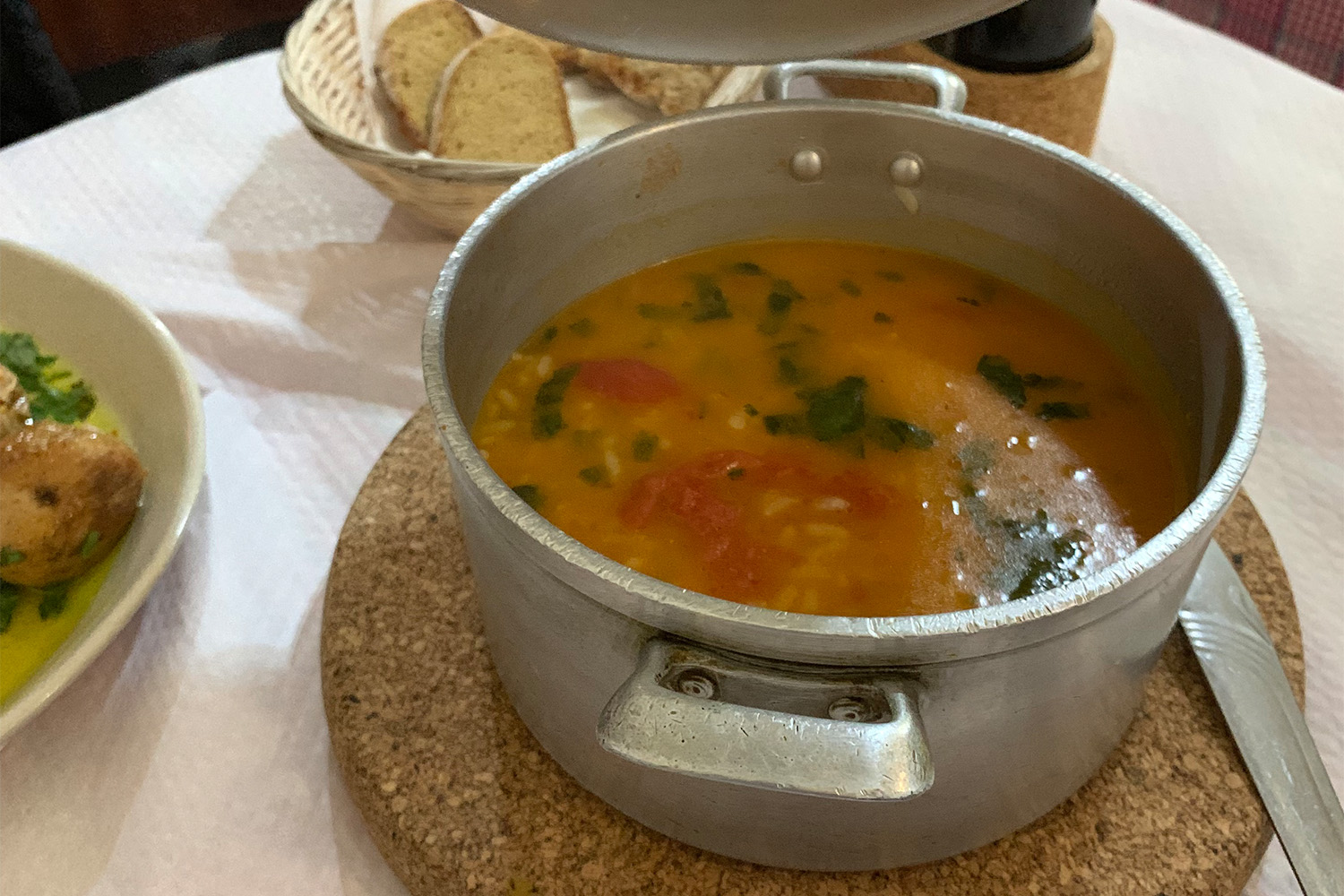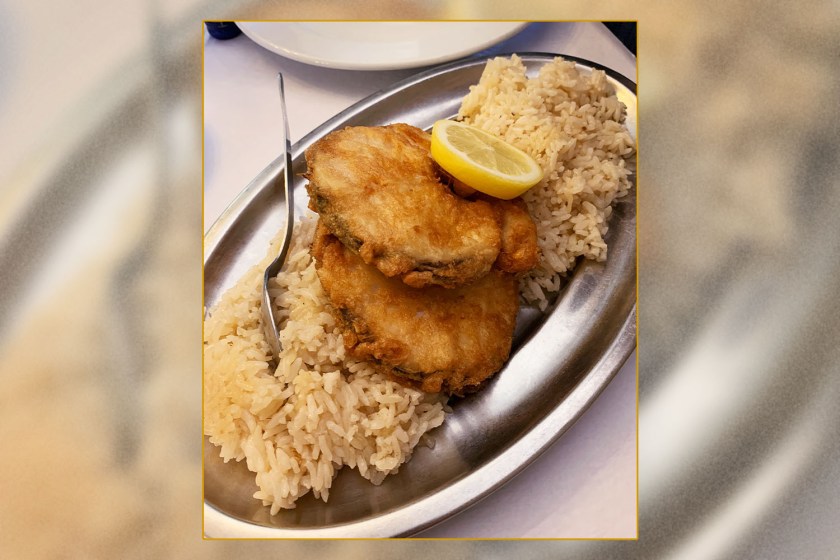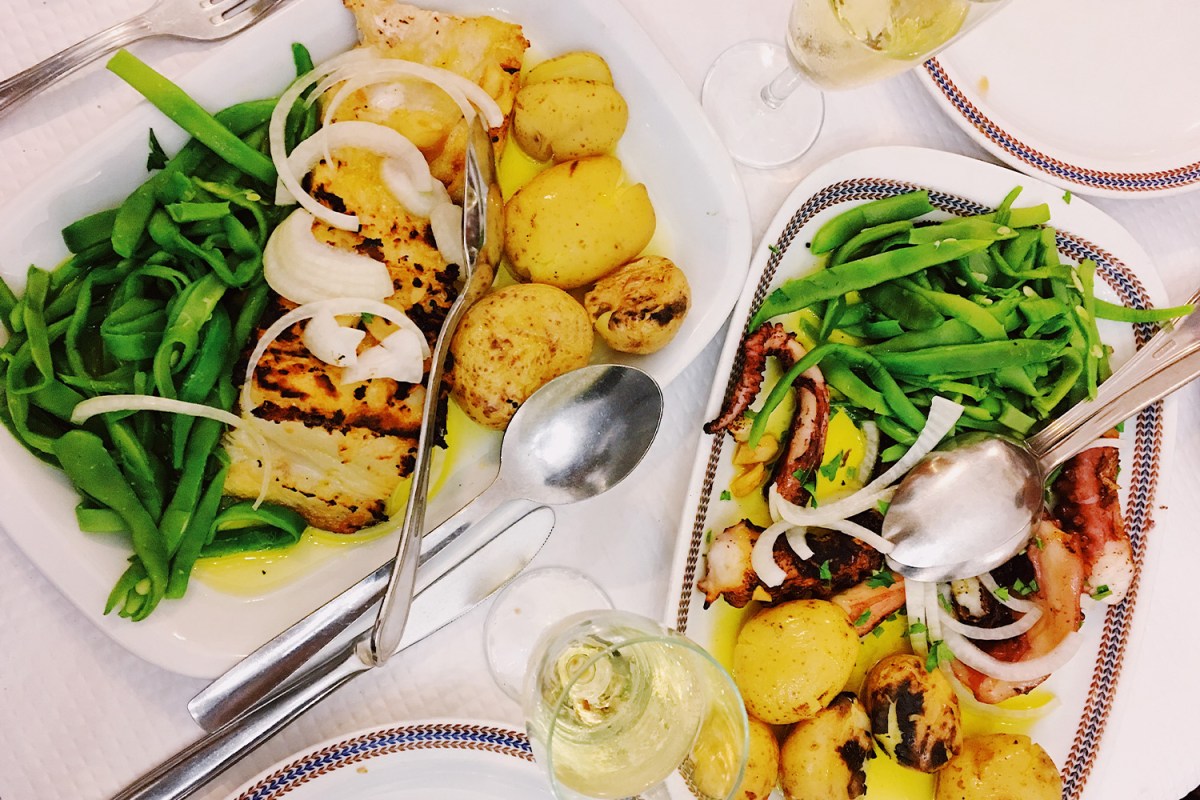I didn’t know what Naco na Pedra was, but that was part of the reason I decided to order it during my visit to restaurant O Arêgos in Lisbon. So when a ruby red, thick, juicy beef medallion arrived sizzling on a hot stone slab sprinkled with salt, I was delighted, but I didn’t know exactly what to do. A man to my left had ordered the same thing, and I watched as he gestured to the young man across from him, encouraging him to slice it on the stone so it cooked faster. Even with my limited Portuguese I heard him say the word “deliciosa” and I knew of course what that meant. I followed suit and soon there was a gorgeous cooked cut of beef in front of me, a bit of chopped garlic underneath. And then I fully understood what beef was supposed to taste like. It was the best meal I had when visiting Lisbon, and it was just 13 euro.
You might wonder how this is possible, especially in a major international city. But people who frequent Portugal’s many tascas already know the answer. Tascas are a phenomenon mostly unique to Portugal, these no-frills restaurants serving traditional Portuguese dishes that might also be found at the home of a beloved family member. Most dishes are under 16 euro, there’s paper towel on the table, almost no decor, (European) football on the television, maybe even some fluorescent lights and a menu of classics that’s entirely in Portuguese. (In fact, this is how you can tell a place isn’t touristy — but they still won’t be mad if you speak English.) “You don’t expect anything fancy or with beautiful presentation. It’s very practical, the food is often not pretty at all, but it’s delicious. And it’s done in a very traditional way,” says Célia Pedroso,a journalist, co-author of Eat Portugal and Lisbon Bureau Chief of international food guide site Culinary Backstreets.

Tascas have been a part of Portuguese culture for some fifty or so years — it’s estimated they arrived in the 1970s, though it’s difficult to tell exactly when. According to Pedroso, tascas grew from carvoarias, a kind of charcoal shop. Usually it was men buying charcoal, and they’d also go in the back of the store to have some wine. “And then they started to also [prepare] some snacks,” Pedroso said. “And eventually, when charcoal was no longer used, they started to serve something more elaborated. And with time they converted in tascas, in places of simple food and wine, but a place for neighbors and friends and family.” That night at O Arêgos, it almost feels like someone’s uncle is in the kitchen on the grill.
While most tascas have different menus every day, if possible Pedroso recommends you don’t leave without trying a bifana, a pork sandwich which she likes to eat with mustard and piri-piri sauce; feijoada, a bean stew; and Pastéis de Bacalhau, or cod cakes. And you know how I feel about naco na pedra. During lunch, the meals are speedy, and Pedroso actually thinks the food is better at lunch sometimes because it’s made earlier in the day. Dinners are longer affairs with hearty laughter and endless carafes of wine. It’s the place you go to sit and enjoy a nice long meal with friends, sometimes before heading wherever your nightlife will take you.

Everyone has their locals, too–almost like the cross between an American diner and a British pub, but with much, much better food. But it’s hard to tell what makes one tasca better than another, Pedroso says, because they are so personal. “This is something very close to us…one of these neighborhood essentials is to have a tasca,” she says. “Everyone has their favorite and we go there and we became part of their family feeling. You know everyone and people know you.” Two of her favorites in particular, however, are Popular do Capelo and Adega Solar Minhoto in Lisbon’s Chiado and Alvalade neighborhoods respectively. It’s also worth noting that many tascas are run by people from Northern Portugal, a region known for its hospitality that adds to tascas’ homey atmosphere. “People in the North are very friendly. They like to host and entertain, so it’s also a fun place to be,” Pedroso says.
Despite their importance to the community, Pedroso says many tascas have been closing. This was in part due to the pandemic, but even gentrification and rent increases took their toll before that. Still, at the ones that do exist, it’s possible to have a true Portuguese experience of community and culture. And no, maybe your trip won’t be long enough where you’ll be able to cultivate relationships of your own with one. But you will see a culture of delicious, fresh food that needs nothing but salt, pepper and good company to thrive.
Every Thursday, our resident experts see to it that you’re up to date on the latest from the world of drinks. Trend reports, bottle reviews, cocktail recipes and more. Sign up for THE SPILL now.


















